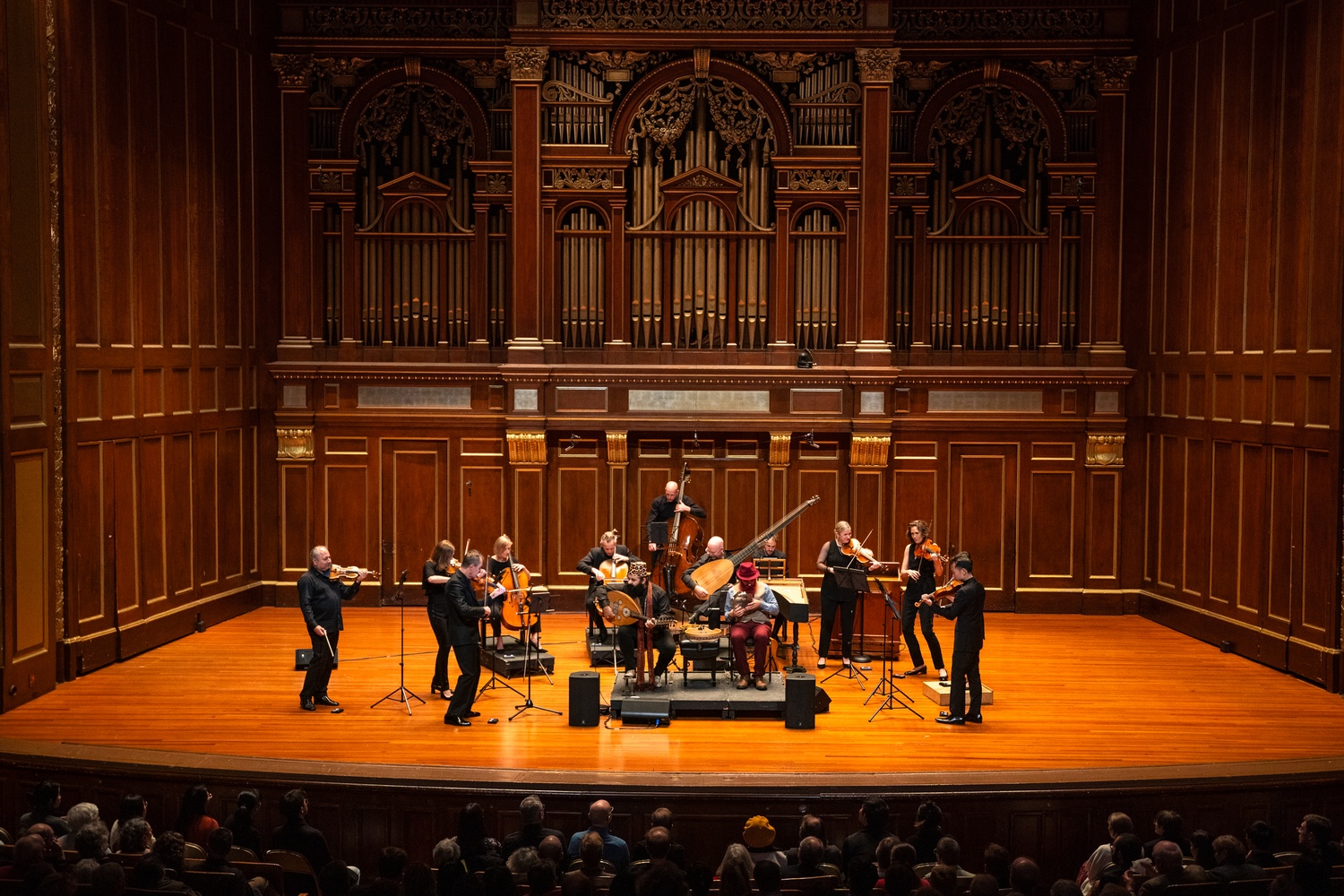
News
Harvard Grad Union Agrees To Bargain Without Ground Rules

News
Harvard Chabad Petitions to Change City Zoning Laws

News
Kestenbaum Files Opposition to Harvard’s Request for Documents

News
Harvard Agrees to a 1-Year $6 Million PILOT Agreement With the City of Cambridge

News
HUA Election Will Feature No Referenda or Survey Questions
Vivaldi Meets Tawadros: Australian Chamber Orchestra Makes the Four Seasons New

On Oct. 18, the Australian Chamber Orchestra performed “The Four Seasons and the Ottomans” at the New England Conservatory’s Jordan Hall. The performance revived Vivaldi’s masterpiece alongside the original compositions created and performed by Joseph Tawadros, an Egyptian Australian composer, and his brother.
As the title suggests, the performance was an encounter that transcended cultures and time. The dialogue between Western and Middle Eastern music stretched the boundaries of classical music and embraced folk music.
The concert’s repertoire alternated between Vivaldi’s famous “The Four Seasons” violin concertos and Tawadros’s original pieces, including “Kindred Spirits,”“Eye of Beholder,” and “Existence.” The alternation of European and Middle Eastern music allowed the audience to compare the two styles and find common ground between them.
The performance opened with a Middle Eastern prelude, “Nihavend Taksîm,” composed by the last Sultan composer, Mehmed VI Vahideddin. Its slow and mysterious tone was immediately intriguing. The Tawadros brothers — Joseph on the oud and James on the riq’ and bendir — sat in the middle of the stage, surrounded by the Australian Chamber Orchestra’s string section. The violinists progressively layered the piece’s sound, and the percussion beats of the riq’ added a vibrant dynamic to the music.
Richard Tognetti, the ACO’s artistic director and lead violinist, was a true highlight of the performance. He was lively and mesmerizing, fully engaged in the dynamic music. The energy in the performance was evident through Tognetti’s enthusiastic body language. His violin’s strong storytelling drew the audience in, and his individuality shone amidst the group of string instruments.
Joseph Tawadros’s oud performance was a cheerful musical collaboration with Tognetti. The pieces he wrote were inspired by his personal experience of losing his parents, and the music appeared to be not only his comfort but also a reminder of his parents. Percussive riq’ evoked an image of a busy market and streets with textiles, spices, and silk. The string instruments in the Ottoman pieces and those in Vivaldi’s piece added new dimensions to the music, perfectly complementing each other in timbre, dynamics, and rhythm.
The orchestra wove together the colors of the four seasons through sound. The fast movements of the string instruments brought surprises and twists to the story told by the music. The concert ended with Tawadros’s “Constantinople” as a grand and energetic finale.
This cross-cultural musical mix highlighted a variety of inspirations. For instance, Vivaldi was influenced by Near Eastern Music for his opera “Bajazet.” Similarly, Venice, Vivaldi’s birthplace, was closely connected through trade with the Middle Eastern world and thus absorbed elements of its culture. The program focused on the shared common ground of Vivaldi’s and Tawadros’s music with their parallel inspirations in vivid tonality and chord progression, as well as ornaments and diatonic scale.
This performance was one of the seven city tours of the Australian Chamber Orchestra in the U.S. from Oct. 11 to Oct. 22.
—Staff writer Dailan Xu can be reached at dailan.xu@thecrimson.com. Follow her on X at @Dailansusie.
Want to keep up with breaking news? Subscribe to our email newsletter.
